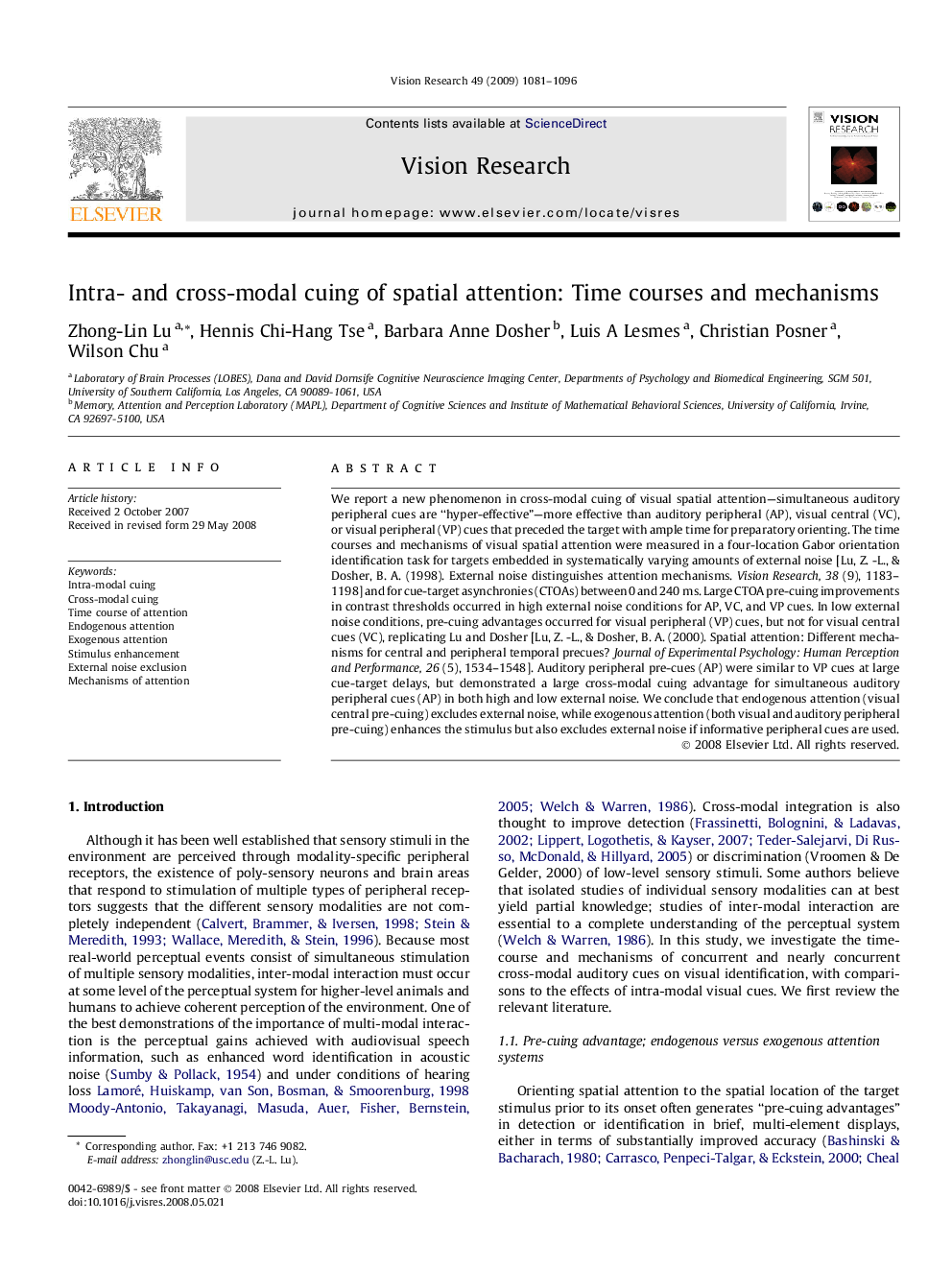| Article ID | Journal | Published Year | Pages | File Type |
|---|---|---|---|---|
| 6203858 | Vision Research | 2009 | 16 Pages |
We report a new phenomenon in cross-modal cuing of visual spatial attention-simultaneous auditory peripheral cues are “hyper-effective”-more effective than auditory peripheral (AP), visual central (VC), or visual peripheral (VP) cues that preceded the target with ample time for preparatory orienting. The time courses and mechanisms of visual spatial attention were measured in a four-location Gabor orientation identification task for targets embedded in systematically varying amounts of external noise [Lu, Z. -L., & Dosher, B. A. (1998). External noise distinguishes attention mechanisms. Vision Research, 38 (9), 1183-1198] and for cue-target asynchronies (CTOAs) between 0 and 240Â ms. Large CTOA pre-cuing improvements in contrast thresholds occurred in high external noise conditions for AP, VC, and VP cues. In low external noise conditions, pre-cuing advantages occurred for visual peripheral (VP) cues, but not for visual central cues (VC), replicating Lu and Dosher [Lu, Z. -L., & Dosher, B. A. (2000). Spatial attention: Different mechanisms for central and peripheral temporal precues? Journal of Experimental Psychology: Human Perception and Performance, 26 (5), 1534-1548]. Auditory peripheral pre-cues (AP) were similar to VP cues at large cue-target delays, but demonstrated a large cross-modal cuing advantage for simultaneous auditory peripheral cues (AP) in both high and low external noise. We conclude that endogenous attention (visual central pre-cuing) excludes external noise, while exogenous attention (both visual and auditory peripheral pre-cuing) enhances the stimulus but also excludes external noise if informative peripheral cues are used.
